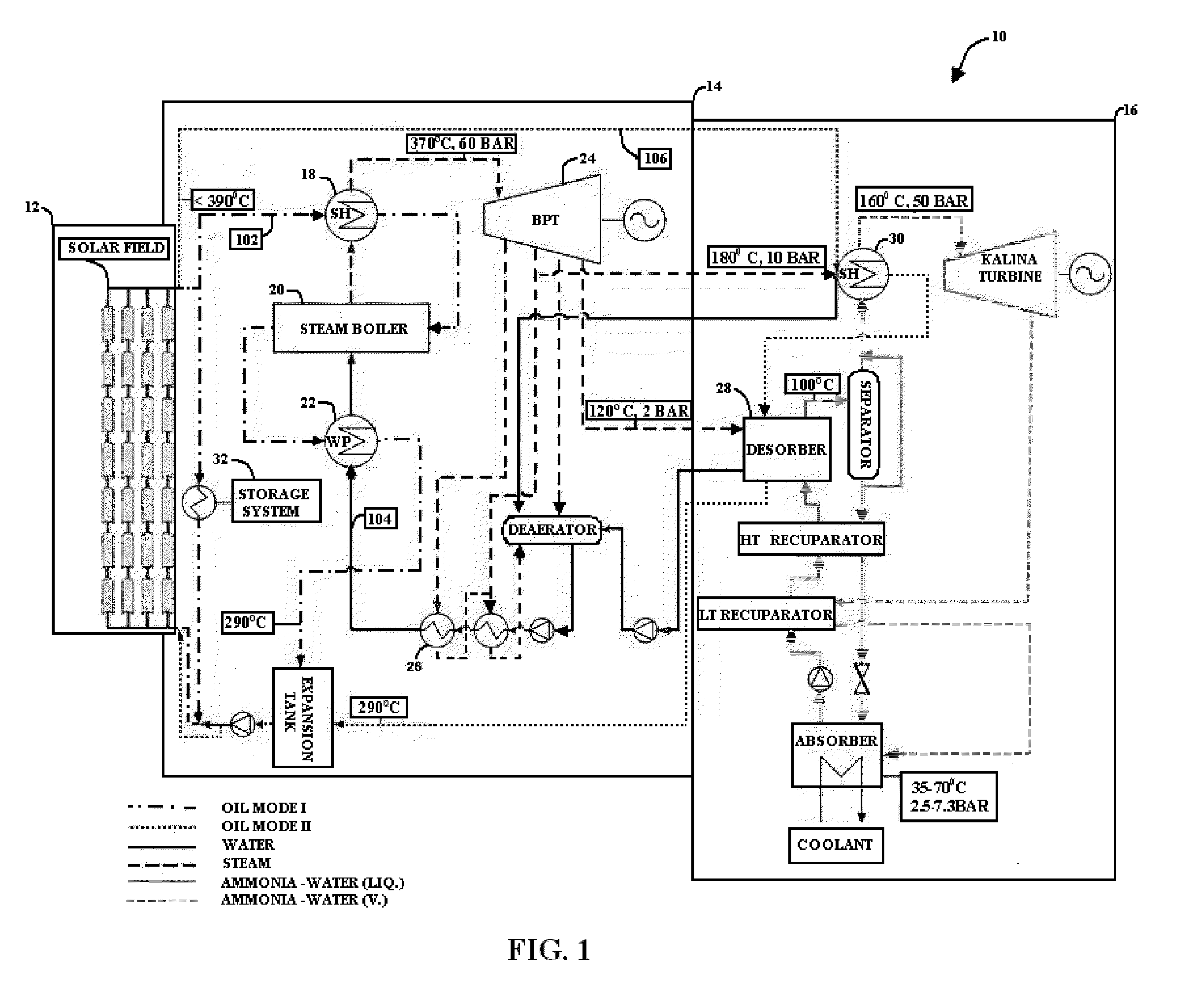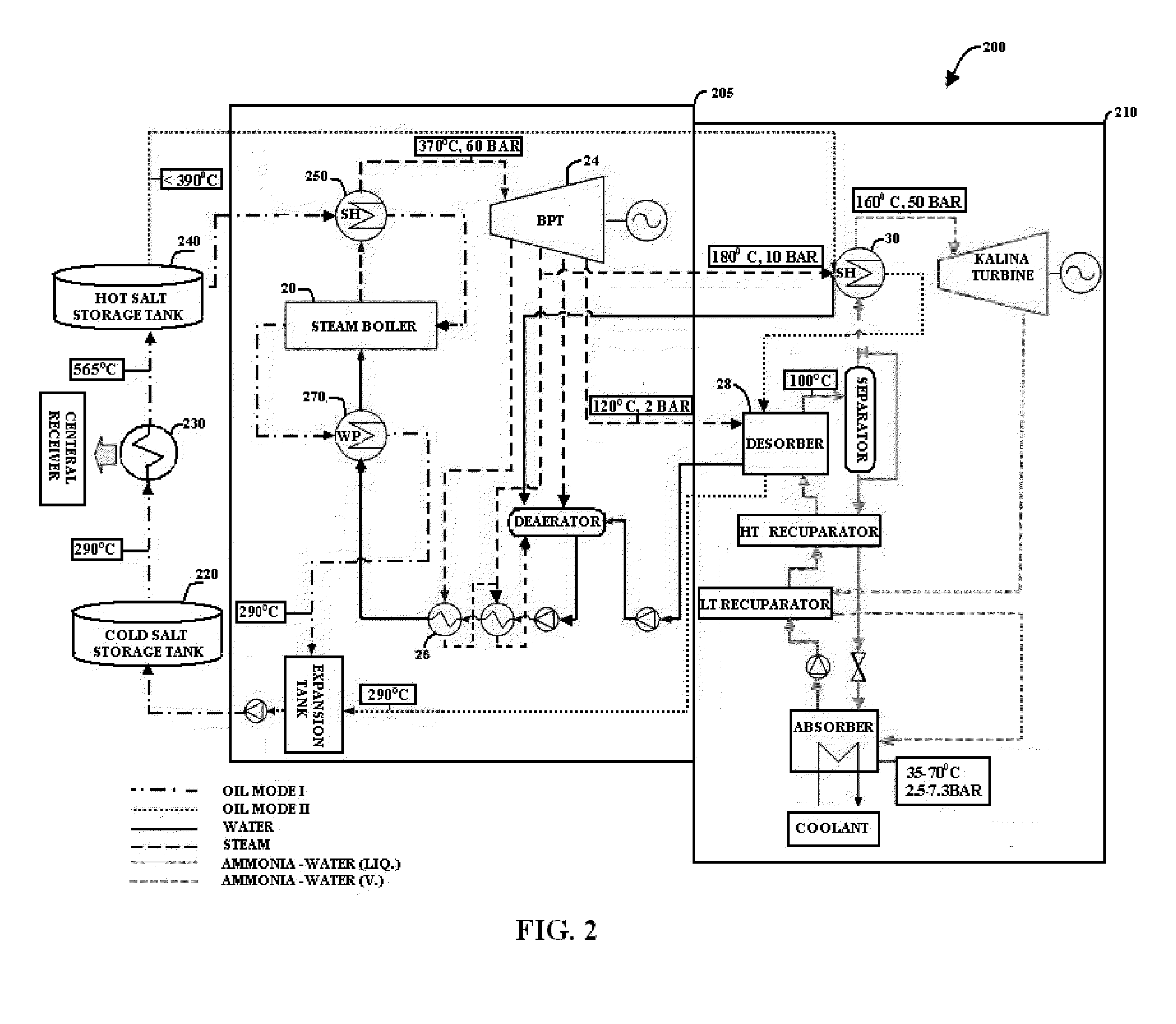System for converting solar radiation into electricity
a technology of solar radiation and electricity, applied in the field of power generation, can solve the problems of their cost and the cost of parabolic trough power is not yet competitive with conventional alternatives
- Summary
- Abstract
- Description
- Claims
- Application Information
AI Technical Summary
Benefits of technology
Problems solved by technology
Method used
Image
Examples
Embodiment Construction
[0042]The present invention will be understood and appreciated more fully from the following detailed example taken in conjunction with the drawings.
[0043]Let us consider now the example illustrated in the schematic block diagram of FIG. 1, of a system 10 designed to produce electricity from solar radiation by heating of a heat transfer media such as HTF apparatus according to an embodiment of the present invention. System 10 is a combined cycle system that comprises 3 major parts and is configured to operate in accordance with two modes of operation, depending upon the extractable thermal energy deriving from the solar source. The first part of the system, 12, is a solar field which is used for collecting solar energy and converting the collected solar energy into heat. According to this example, the solar field comprises a plurality of parabolic trough shaped collectors having pipes extending along their focal line, through which the heat transfer fluid, e.g. thermal oil, flows. T...
PUM
 Login to View More
Login to View More Abstract
Description
Claims
Application Information
 Login to View More
Login to View More - R&D
- Intellectual Property
- Life Sciences
- Materials
- Tech Scout
- Unparalleled Data Quality
- Higher Quality Content
- 60% Fewer Hallucinations
Browse by: Latest US Patents, China's latest patents, Technical Efficacy Thesaurus, Application Domain, Technology Topic, Popular Technical Reports.
© 2025 PatSnap. All rights reserved.Legal|Privacy policy|Modern Slavery Act Transparency Statement|Sitemap|About US| Contact US: help@patsnap.com



